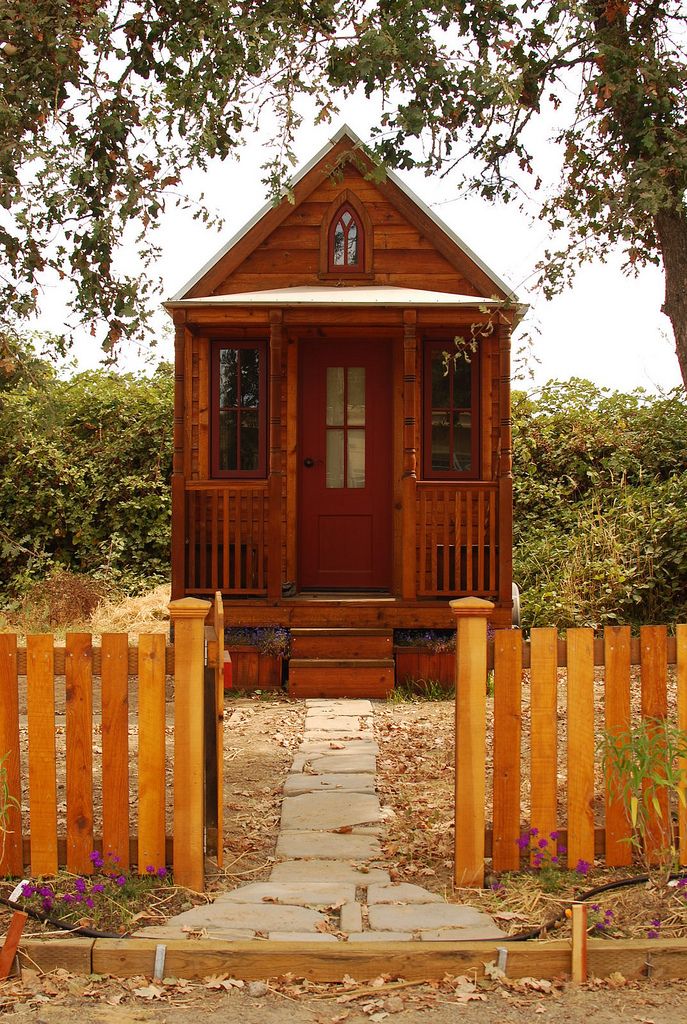
Interest in houses of only a few hundred square feet has picked up in the last several years, with owners and designers praising their simplicity, efficiency and and financial advantages. Websites like The Tiny Life offer guidance for escaping the tyranny of a big mortgage with a move to the “the tiny life.”
But the country’s big production builders aren’t as impressed. A survey of big builders by ConstructionDive found they’re sticking with what they know best–bigger, more conventional houses with more attractive bottom lines.
“Despite all the attention on tiny houses and the success of some small builders, almost no major homebuilding companies have latched on to the movement and tried out their own line of tiny houses,” Emily Peiffer writes.
The reason, says KTGY executive director Nick Lehnert, is most big homebuilding companies are “square-footage driven” and remain committed to building large houses, not spreading out a larger number of smaller homes.
High land costs don’t favor tiny houses
Brian Johnston, chief operating officer for Mattamy Homes, said given high land costs, “ground-oriented housing” is inefficient. “The answer is going up in the air, not trying to cut construction costs by building smaller homes,” he told the website.
RELATED ARTICLES
Tiny House Jamboree Draws 40,000
Tiny Houses Replace Tents for Homeless
Little Houses Are a Big Step for Dallas Homeless
A number of well-publicized tiny-house communities have been built in the last couple of years (see Related Articles), including projects in Maine, Texas and Washington state. D.R. Horton, the country’s biggest house builder, experimented with a community of 29 “micro-homes” homes ranging in size from 364 sq. ft. to 687 sq. ft. called Division 43. Prices for the net-zero energy houses started at $100,000.
The project was apparently successful, but the company didn’t try a repeat, nor have any other production homebuilders. Most large homebuilding companies ConstructionDive contacted said the tiny-house market was a “niche” that doesn’t affect them.
“The problems are the cost to construct,” Lehnert said. “I think that builders shy away because no one has designed a production-esque type of tiny house. Most builders are staying with the traditional.”
Industry consultant Peter Dennehy said production builders seem to be favoring even larger houses than they were constructing before the housing bubble burst. Parts of the market that are the strongest are 55-plus builders and those looking to move up, not a trend that would seem to favor tiny houses.
“Millennial” buyers (those born from the early 1980s to the early 2000s) would seem to make a good target audience for tiny-house builders, but they are more likely to rent housing than they are to buy. They rent for an average of six years before buying, ConstructionDive said, which is twice as long as renters waited in the 1970s.
Although large homebuilding companies are not jumping onboard, Lehnert said his own company, an architectural and planning firm, would devote more attention to tiny houses. He’s confident the tiny house trend still has legs, but Johnston thinks it’s all about the economy: until the economy grows stronger, smaller houses will continue to look attractive.
“If income growth does not pick up, the fad will continue,” he told ConstructionDive. “Thus, it is all about the wider economy.”
Read more: http://www.greenbuildingadvisor.com/blogs/dept/green-building-news%2A#ixzz3t0tN3xOi
Follow us: @gbadvisor on Twitter | GreenBuildingAdvisor on Facebook
Fine Homebuilding Recommended Products
Fine Homebuilding receives a commission for items purchased through links on this site, including Amazon Associates and other affiliate advertising programs.

Handy Heat Gun

Reliable Crimp Connectors

Affordable IR Camera

Owners of tiny houses sing their praises, but mainstream builders are sticking with more traditional, and predictable, designs.


























View Comments
Where I'm from these are a rarity. Did not know it's becoming a trend now. I've installed gutters on several though.